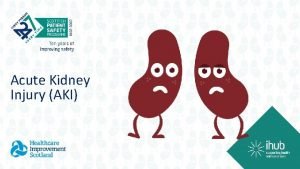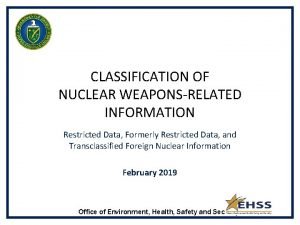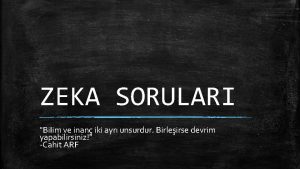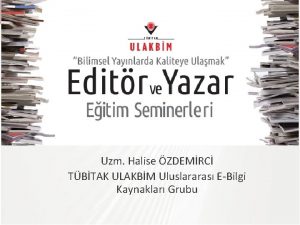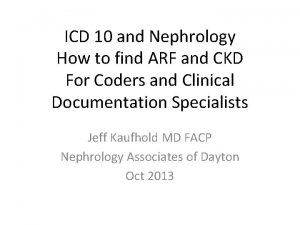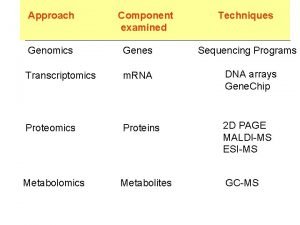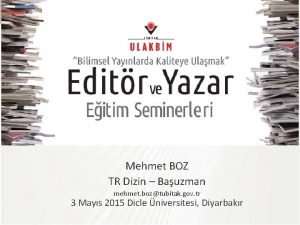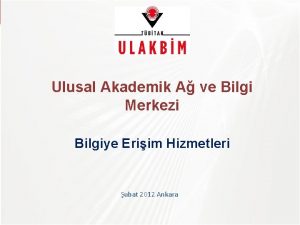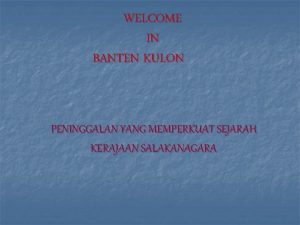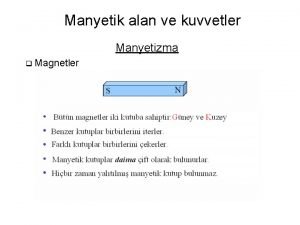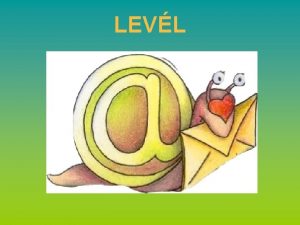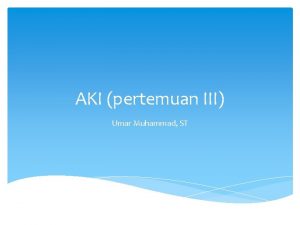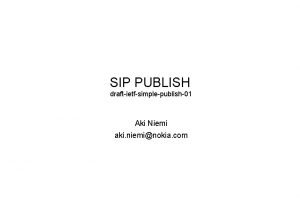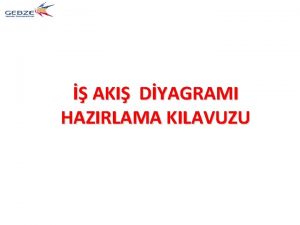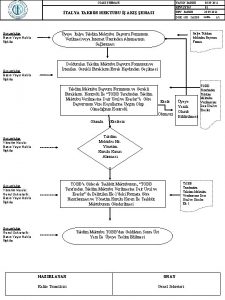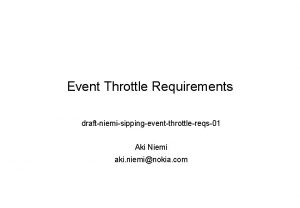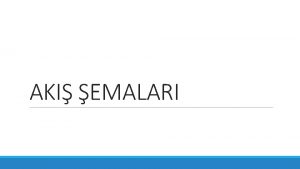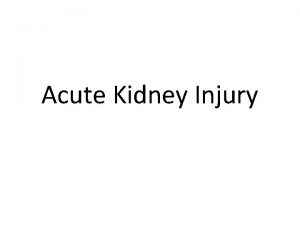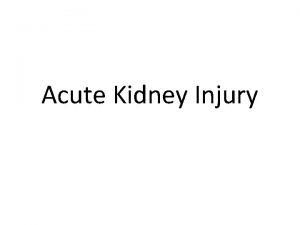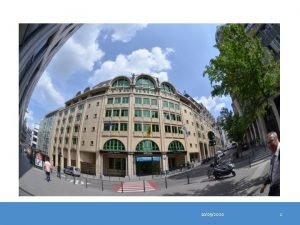AKI formerly ARF 13 18 of all people

















- Slides: 17

AKI (formerly ARF) 13– 18% of all people admitted to hospital

Format for the Session 8. 10 Acute Kidney Injury (AKI) • Recognise AKI/potential for AKI • Distinction from chronic renal failure • Establish underlying pathophysiology (causes) • Investigations • Management • Prognosis • Prevention

Recognise (Potential) Acute Kidney Injury Within the past 7 days: • s. Cr rise of 26 micromol/l + in 48 hrs • 50% + rise in s. Cr known or presumed to have occurred • urine output <0. 5 ml/kg/hr for 6 hrs+ • NB children differ!

Causes of AKI 50% of AKI

Investigation of AKI Bedside tests • Strict urine output monitoring with catheter (if not already) • Dip, urine osmolarity, MCS • Weight BD • ECG Bloods • Lactate • Serial s. Cr, Urea, electrolytes, serum osmolarity • Cultures Imaging • USS within 24 hrs IF pyonephrosis (infected and obstructed kidney[s]) is suspected • Chest Xray Special

Initial Management of AKI Pre Renal • Stop nephrotoxics, do not use loop diuretics to force urine output • Rehydrate, correct electrolytes, treat sepsis with ? kidney friendly Abx Renal • Call nephrology (NICE say so!) Post Renal • Acute retention catheterise • Ureteric obstruction ? Nephrostomy Urology

AAAAAH my treatment is not helping!! When there’s something bad, and it don’t look good Who ya gonna call?

Your SHO/reg and suggest a referral to Renal boffins for an opinion on haemodialysis

Indications for dialysis (usually haemofiltration in ITU) • Known Tx/dialysis patient OR • Initial treatment failure AND one of AEIOU

What’s AEIOU you say? !! Acidosis (metabolic) Electrolyte changes (hyperkalemia) Ingested Toxins (barbiturates, salicylates, lithium, methanol) Overload (pulmonary oedema unresponsive to diuretics) Uremia symptoms (pericarditis, encephalopathy)

Triggers to call the nephrologist in the 1 st Instance • Initial treatment measures fail • Specialist diagnosis (vasculitis, glomerulonephritis, tubulointerstitial nephritis or myeloma) • AKI cause not clear • AKI has caused complications • Stage 3 AKI (according to (p)RIFLE, AKIN or KDIGO criteria) • Transplant/ CKD stage 4 or 5 patient

Prognosis of AKI • 20 -30% mortality and increasing with each stage of AKI • Risk of CKD • 15 -32% of survivors are dependent on RRT at hospital discharge Nephrology Follow Up

Prevention • Older adults, comorbidities, surgery, contrast studies • Do NOT perform a contrast investigation without a U&E’s • Avoid nephrotoxic meds as far as poss and stop ACE/ARB pre-contrast (pharmacist) • Consider preloading with N. Saline • Avoid dehydration, particularly before surgery

Explain the need for RRT to an elderly man

References • http: //www. fastbleep. com/ • NICE clinical guideline 169 guidance. nice. org. uk/cg 169

• kidneys receive 20 -25% of the resting cardiac output via the right and left renal arteries • 1. Cardiac output which determines the amount of blood flow down the renal arteries • 2. Autoregulation which sets the pressure gradient between the afferent and efferent arterioles; and • 3. Size and charge of molecules that are going to be filtered through the nephrons

3. 26 Abnormalities of sodium and potassium By the end of Phase II students should be able to: • initiate investigation of hypo and hyper natraemia and hypo and hyper kalaemia • initiate management of these conditions
 Skt aki
Skt aki Aki kifelé tekint álmodik aki befelé az ébred
Aki kifelé tekint álmodik aki befelé az ébred Bank alfalah formerly
Bank alfalah formerly To fish as formerly
To fish as formerly Formerly restricted data
Formerly restricted data Absence management formerly aesop
Absence management formerly aesop Cahit arf proje ödevi
Cahit arf proje ödevi Ubyt tübitak
Ubyt tübitak Cendel karaman
Cendel karaman Pckd icd 10
Pckd icd 10 Arf-gap
Arf-gap Cahit arf
Cahit arf Cahit arf teşvik
Cahit arf teşvik Cahit arf bilgi merkezi
Cahit arf bilgi merkezi Name a line containing point a
Name a line containing point a Sejarah cihunjuran
Sejarah cihunjuran Akı formülü
Akı formülü Metolasona
Metolasona
